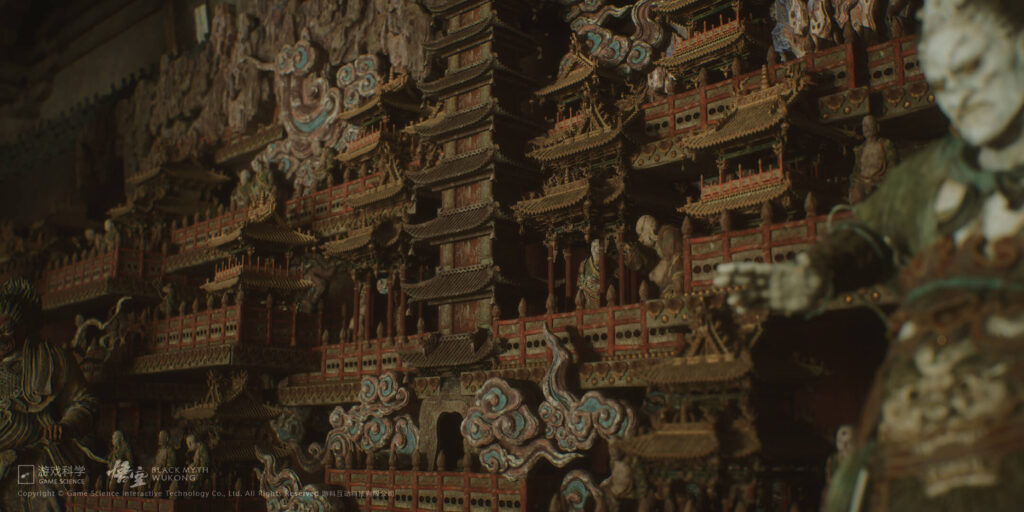
Black Myth: Wukong – Explore Actual China Locations Behind It
Before we dive into the actual China locations, let’s take a brief look at Black Myth: Wukong! It is an action RPG developed by Game Science and inspired by the classic Chinese novel Journey to the West.
One of the most striking features of the game is its visual design. It boasts nearly 1:1 reproduction of the fantastical landscapes of ancient China, including the ancient temples, towering peaks, mythical mountains, enchanted forests and more. The game’s graphics will let you immerse in a vivid, living world.
Shanxi Province – The real inspiration behind Black Myth: Wukong
It is said that among the 36 inspired locations in China, 27 are in Shanxi Province, which you might not have heard of before.
Shanxi Province is located in northern China. It is one of the least visited places in China, but it has deep historical roots and landscapes. Shanxi owns ancient temples, historical towns, as well as unique geological formations. Shanxi Province is home to over 80% of China’s ancient wooden structures. The attractions have undoubtedly inspired the world of Black Myth: Wukong.
Little Western Paradise

The game features grand, ancient temples that echo the architectural style of traditional Chinese religious sites. These are all fine examples of excellent Ming Dynasty artworks, forming a true treasure of Ming Dynasty colour statues.
It captures Da Xiong Bao Dian and Qianfo An. With its grand architecture and intricate carvings, Da Xiong Bao Dian mirrors the game’s majestic temples. The thousands of Buddha statues of Qianfo An provide a strong visual impact, also seen in the game’s portrayal.
Yungang Grottoes

The Yungang Grottoes is a UNESCO World Heritage Site, featuring thousands of statues and carvings created during the Northern Wei Dynasty. It is one of the three largest grottoes in China. It is reflected in the game of ancient temples. The rock-cut caves and sculptures are a treasure in the art treasure of ancient China.
Yuhuang Temple

The game includes vibrant mythical creatures. The sculptures of the Twenty-Eight Mansions in Yuhuang Temple are one of the inspiration. They represent deities, celestial beings, and mythological figures with each of the twenty-eight mansions, which reflect the deep cultural and religious traditions of China. Yuhuang Temple carries a strong sense of history and highlights Ming dynasty architecture.
Foguang Temple

The game’s ancient temples are inspired by real-world historical sites. One of them is Foguang Temple. Foguang Temple has well-preserved architecture, and it is second only to the main hall of Nanchan Temple in Wutai County. The existing wooden structure in the country second place in the building. The Tang Dynasty buildings, Tang Dynasty sculptures, Tang Dynasty murals, and Tang Dynasty inscriptions in Foguang Temple are called “Four Wonders”.
In Black Myth: Wukong, its intricate carvings and ancient halls are reflected, offering players a world with a rich cultural heritage.
Tiefo Temple

Source: Reddit
Tiefo Temple is famous for its iron Buddha statues. The most impressive coloured sculptures in Tiefo Temple are the 24 statues of the gods that surround the temple. These statues are as tall as real people, with vivid and unique shapes. In Black Myth: Wukong, players will be immersed in Tiefo Temple’s iron statues and mysterious environment.
The Yingxian Timber Pagoda

The Yingxian Timber Pagoda is an architectural marvel in Shanxi Province. It is a wooden construction with intricate design, standing as one of the oldest and tallest wooden structures in China.
The wooden pagoda, shaped like an octagon, has five levels. Except for the stone foundation on the ground floor, the entire structure is made of wood, using the traditional techniques of Sunmao. Each layer of the pagoda has wind chimes that create a melody when the wind passes through.
The towering pagodas in Black Myth: Wukong draws from the Yingxian Timber Pagoda, enriching the game with its ancient Chinese architecture and lore.
Guanque Tower

Guanque Tower is named after the storks that sometimes roost on it. As one of the four famous towers in ancient China, it combines historical and architectural beauty. Guanque Tower has four floors viewed from the outside and six floors inside. The cultural furnishings in the building show the foundation of 5,000 years of Yellow River culture.
There’s also a reflection of the Guanque Tower in the game and it offers players rich cultural and historical influences.











